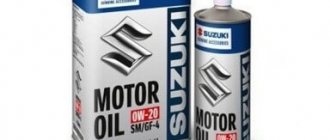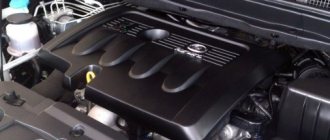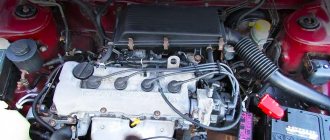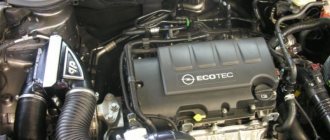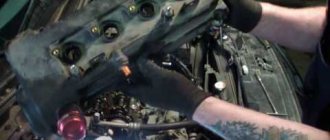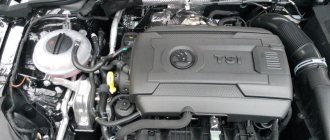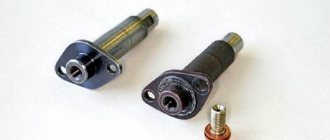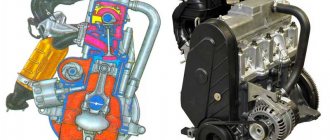The history of the compact SUV Suzuki SX4 goes back only 13 years. People first started talking about this car in 2006, when the Japanese automaker presented a brand new all-wheel drive car with a nice design during the Geneva Motor Show. The development of the model's exterior was carried out by the world-famous Italian automobile designer Giorgetto Giugiaro, who was directly involved in designing the appearance of such cars as the Audi 80, BMW AG, Bugatti Veyron, Mazda, Renault and many other brands. Initially, Suzuki CX4 was supplied only to European dealerships, but a few years later sales of the model began to improve in Asia, Africa and South America. Already in 2013, the Japanese presented the second generation of the SUV, sales of which started in Europe six months after the Geneva Motor Show.
The implementation of the new product in Russia began almost immediately after the appearance of the Suzuki SX4 on the automotive scene. The SUV is quite popular in Europe and is actually fighting on an equal footing for its market segment with its direct competitor, the Mitsubishi ASX. The miniature Suzuki SX4 captivates many car enthusiasts with its greater cross-country ability compared to the Mitsubishi ASX. However, the model loses in such parameters as dynamics, comfort and luggage compartment capacity. Despite the fact that the SX4 is lighter than the ASX, acceleration to hundreds takes 11.92 seconds from the former, when the brainchild of Mitsubishi overcomes the first serious mark on the speedometer in 11.58 seconds. For car owners who prioritize indicators such as engine reliability over their vehicle, other indicators of the car are, of course, important. In this article, we will tell you exactly what the service life of the Suzuki CX4 engine is, and what to expect from the car during its active use.
Suzuki SX4 powertrain range
The SUV received a small number of power units. The working volume of the units is 1.4 and 1.6 liters, this applies to modifications of the model supplied to Russia. Other versions of the car with 1.5, 1.9 and 2.0 liter engines are available for the American and Asian markets. In Japan, cars with the M15A engine, which were also equipped with the Suzuki Aerio and Ignis, were in great demand. This is an in-line 16-valve four with 115 horsepower. A version with a two-liter engine in all-wheel drive configuration is also available for purchase on the Asian market.
In general terms, the Suzuki CX4 engine line looks like this:
- modern 1.4-liter turbocharged K14C Boosterjet engine with a boost level of 136-140 hp;
- 1.5-liter M15A engine with 110 horsepower and torque of 4400 rpm at 145 Nm;
- M16A engine with 106-136 horsepower, producing 144-160 Nm;
- 1.9-liter D19AA unit with a stated power of 120 “horses”;
- two-liter J20A with 143 horsepower, aggregated with both manual and automatic transmissions.
Many potential SUV buyers are interested in the question: “timing chain or belt?” Suzuki CX4 engines received a timing chain drive. Chain engine elements, unlike belt ones, last much longer. They rarely break, but if they break, they still bend the valves. It is important to monitor the condition of the most important element of the gas distribution mechanism and replace it in a timely manner. In general, all of the listed units are reliable and unpretentious, have solid potential, and are resistant to harsh operating conditions.
Buying a car
If we are talking about a new car, then everything is very simple. You can just go to the salon and buy it. If we are talking about the used car market, then everything is not so obvious.
Of course, each car is individual. In our used car market, the most common engine for this model is the 1.6-liter naturally aspirated gasoline engine M16A. You can also consider imported cars with engines of a different size (J20A 2.0 liters and M15A 1.5 liters). One of the advantages of such options is less mileage in Russia. The downside is that this motor has been less studied in our conditions.
It is also worth understanding that if you are considering purchasing a modification with all-wheel drive, you need to carefully diagnose its condition. Troubleshooting this type of problem can take a huge toll on your wallet financially. Also carefully check the condition of the main units (engine, gearbox).
Resource of the K14C turbocharged engine
In 2021, Suzuki began producing a series of new turbocharged engines, which, according to the designers' plans, should change the way motorists think about the dynamics of compact SUVs. This is how the new generation K14C gasoline power unit appeared. The engine belongs to the K14 series of engines, active production of which began at the very beginning of the current century. Suzuki engineers have always prioritized the production of powerful engines while reducing their size and reducing exhaust toxicity. For the first time, the idea and basic concept was realized with the release of the Boosterjet engine. This is a 1.4-liter engine made of lightweight alloys with a 16-valve head mounted on top of the cylinder block. The engine received an in-line arrangement of four cylinders with four valves on each. In total, the design of the gas distribution mechanism forms a DOHC layout with two camshafts.
The K14C Boosterjet engine received a turbocharging system in the form of an air supercharger. Due to this, the engine has excellent traction already at 1500 rpm. At its peak at 5,500 rpm, the unit produces up to 140 Nm of torque and generates 140 horsepower. The innovative promise of the Boosterjet engine lies not only in lightweight and compact materials, but also in the electronic fuel injection system and VVT-i dynamic valve timing. The main advantages of the engine are high efficiency and good dynamics with a working volume of the cylinder block of 1,373 cubic meters. see. Suzuki managed to achieve a low CO2 content through the introduction of point fuel injection: the optimal amount of fuel-air mixture enters the cylinders, which burns completely, and the exhaust gases pass through several stages of filtration.
The timing drive is a conventional chain with no expiration date stated by the manufacturer. Typically, an element of the gas distribution mechanism must be replaced at the first signs of stretching: a specific sound of the engine, reminiscent of the sound of a diesel engine, a clattering sound and metallic clanging. It is worth focusing on a chain resource of 80-90 thousand km. The service life of the timing chain is not high enough, which is explained by the high engine power with a small displacement. Since this is a relatively new motor, its actual service life is completely unknown. Today you can find Suzuki 1.4 copies with a mileage of 120-150 thousand kilometers. Japanese-made power units have always been famous for their reliability and long service life. As for Suzuki engines, of course, they are difficult to classify as the standard of engine construction. However, the 1.4-liter turbocharged Boosterjet should run at least 250-280 thousand kilometers.
Technical characteristics of Suzuki M16A
The M16A engine is characterized as a power unit designed for quiet driving and is installed on city cars. Therefore, the technical parameters given below do not have any tuning potential:
| ICE index | M16A |
| Volume, cm 3 | 1586 |
| Power, hp | 106 — 117 |
| Torque, N*m | 156 |
| Fuel type | AI-95 |
| Fuel consumption, l/100 km | 5.8 — 6.3 |
| Engine Information | Gasoline, in-line 4-cylinder, 16-valve, VVT, DOHC |
| CO2 emissions, g/km | 119 — 129 |
| Cylinder diameter, mm | 78 |
| Compression ratio | 11 |
| Piston stroke, mm | 83 |
| Gas distribution mechanism | Chain drive |
| Engine serial number location | At the bottom of the cylinder block, near the gearbox |
To summarize, we can safely say that this engine is rather weak for dynamic driving and is more suitable for quiet driving in urban environments.
Potential life of the M16A engine
The M16A engine was a continuation of another M15A power plant, which was equipped with the first generation of the model. If the Suzuki SX4 with the M15A under the hood was not officially delivered to Russia, the production and delivery of cars with the M16A to the territory of the Russian Federation continues to this day. This is a fairly reliable and time-tested power unit, which is also installed on Suzuki Escudo and Suzuki Grand Vitara. It is an in-line aluminum “four” with a VVT variable valve timing system. The gas distribution system is made according to the DOHC scheme with two camshafts and a 16-valve head. The engine was first tested on the Suzuki Liana car in 2004 and after a successful debut, the installation migrated to many other cars of the Japanese company.
Compact Japanese SUVs that have covered 300,000 kilometers with the M16A are not uncommon today. Potentially, the motor is capable of going even beyond this mark. The driver's task is to properly and timely maintain the unit. The engine is demanding on the quality of engine oil; the lubricant should be changed every 7-8 thousand kilometers. We recommend using engine oil prescribed by the engine manufacturer or a high-quality equivalent. To avoid problems with the car, it is worth changing the spark plugs every 20-25 thousand kilometers. The M16A engine is capable of operating equally stably on both AI-95 and AI-92. However, it is best to refuel with high-quality high-octane AI-95 fuel, which significantly reduces the life of key parts and mechanisms of the M16A.
The main advantage of the 1.6-liter engine is its simplicity of design and maintainability. Today there are enough specialists in Japanese engines who can sort through even the oldest in-line “fours”. If you recognize the first signs of breakdown in time, you can avoid serious financial costs for major repairs. Do not forget about engine self-diagnosis methods. One of the simplest is to warm up the installation to operating temperature and then measure the compression in the cylinders. Since the M16A does not have hydraulic compensators, valves should be inspected regularly and thermal clearances adjusted. The weakness of the M16A 1.6 lies precisely in the rapid violation of the established gap sizes. However, with high-quality maintenance, the service life of the Suzuki CX4 engine will be 280-320 thousand km.
Maintenance Recommendations
Due to the fact that this power unit is considered extremely reliable, below are some tips for its operation that will help extend its trouble-free service life.
In order for the engine to operate smoothly and last for many years, it is necessary first of all to carry out timely maintenance. The oil should be changed every 7,500 - 10,000 km and only of good quality. Recommended viscosity 0W-20 - 5W-30. An important factor in stable engine operation are spark plugs. They should be replaced every 30,000 - 40,000 km, provided they are of high quality. Engine performance, although to a lesser extent, is also affected by the quality of the fuel. For the M16A engine, the optimal gasoline is 95.
In addition, it is very important to check the technical condition. One of its main stages is measuring compression in the engine cylinders. To do this, you need to warm up the engine to operating temperature, disconnect the ignition coil and high-voltage wires, and then unscrew all the spark plugs. After this, you should disconnect the fuel injectors by disconnecting them from the connectors and connect the compression gauge to the connector intended for the spark plug. Next, you need to depress the clutch and press the gas pedal all the way, then start the starter and watch the instrument readings.
For reference! In order to obtain the necessary compression data, you need to spin the engine to at least 250 rpm. To do this, the battery must be fully charged!
If values below normal (1100 kPa) were obtained, this indicates that the piston rings and valves are worn out and require replacement.
In addition, it is recommended to check the thermal clearance of the valves (in the bottom photo). This is necessary so that the engine does not start to run noisily over time. Violation of the thermal clearance of the valves also leads to increased wear of the elements of the gas distribution mechanism and valves in particular. For the M16A power unit, the thermal clearance of the intake valves is 0.18 - 0.22 mm, exhaust valves - 0.28 - 0.32 mm (for a cold engine) and 0.21 - 0.27 mm, 0.30 - 0.36 mm – at engine operating temperature. If any of the valves does not meet the specified ranges, it must be adjusted using special washers.
A huge number of car owners equipped with the M16A power plant agree that this is a very reliable and economical unit. However, it is worth paying attention to the timing chain, because it tends to stretch (closer to 100 thousand kilometers). The chain must be replaced together with the drive sprockets. In addition, owners note increased noise when the engine warms up, especially in the cold season. This is all due to the generator drive belt, which, after heating, stops making dubious sounds.
Since the Suzuki M16A engine is designed for budget cars, it has good maintainability. All engine parts are replaced individually, and spare parts for it will not be difficult to find. In addition, this motor does not have a complex design or high-tech systems, so its repair or maintenance can be done independently.
Reviews from car owners
Japanese engines are not without their drawbacks and can sometimes annoy the car owner. Chain-driven engines are prone to such problems as the chain jumping one or two links, sudden breakage and premature stretching. Not all car owners encounter these problems, but in some cases problems with the chain occur. It is very important to monitor your engine oil consumption level. Some Japanese engines are sensitive to the quality of the lubricant.
If you use a product that is not recommended by the car manufacturer, then over time the engine will begin to consume more oil than it should. Most often, increased consumption indicates stuck oil scraper rings and worn out caps. Floating speeds indicate problems in the fuel system, most often clogging. O are not “chronic” and not systematic. The condition and service life of the engine mainly depends on the quality of maintenance. Now we’ll tell you what the service life of the Suzuki CX4 engine is according to owner reviews.
K14C Boosterjet motor
- Kirill, Donskoy. I am the owner of a version of an SUV with a 1.4-liter turbocharged K14C Boosterjet engine. I purchased the car in 2021 immediately after the model appeared in Russia. I will say that comparing the Suzuki CX4 with any other brand will not be entirely correct. No other manufacturer offers customers the same favorable conditions: this includes adequate service at the dealership, high quality at an affordable price. The car is very playful and well controlled. Enough 140 “horses”, both in the city and outside the city limits. In almost 3 years, I covered only 70,000 kilometers, which is not so much. In fact, no work was done to the engine. I had it serviced for the very first time by a dealer - replacing engine oil, filters, and other consumables - after which I did all the work myself. I am confident in the high build quality of the engine, so I am counting on 280-300 thousand km mileage.
- Sergey, Samara. Good afternoon, Suzuki SX4 car, K14C Boosterjet engine with 140 horsepower, basic equipment with all-wheel drive and CVT. About 120,000 kilometers have been covered, and I can already draw the first serious conclusions regarding the service life of the 1.4-liter engine. In the “auto” driving mode, the engine clearly lacks power; it feels like the combination with the CVT is not the best. But already during the transition to “sport” the opposite feeling occurs; the car goes well without the feeling of a trailer at the rear. I can compare this car with the 1.4-liter Tiguan, however, when it comes to dynamics, the “German” noticeably wins. I service the engine every 10 thousand kilometers, I prefer to give the car to the dealer, since I myself don’t know much about cars. In general, a high-quality assembled power unit, since the timing chain has not even been changed yet, only the oil and filters. They said that the engine is designed for a maximum of 300,000 kilometers in our conditions.
- Anatoly, Tyumen. An SUV with a 1.4-liter engine is noticeably faster than its 1.6-liter “brother.” I was pleasantly surprised during my first ride behind the wheel of the Suzuki SX4. When you press the gas pedal at 2 thousand rpm, the car rushes forward like a sports car. I have a third generation model; before that I drove a second generation car. What can I say? Sound insulation has been noticeably improved, the turbine is very quiet, you can’t even hear the engine at times, I really like the variator, the gears are short. Overall, an excellent car for the money; there were absolutely no problems with the engine. The odometer now shows 80 thousand km, the car is 2021, I drive a lot, so far the flight is excellent.
- Vasily, Magnitogorsk. Hello, I purchased the car in November 2021, the latest generation was straight from the dealership to my garage followed by a Suzuki CX4 with all-wheel drive and a CVT. I try not to load the engine, I only fill it with original engine oil. In the morning, be sure to warm up, before turning off the engine, I idle for 1-2 minutes. In general, I recommend everyone to take care of the car, because the 1.4-liter inline-four K14C does not like high temperatures, which means that you need to monitor the quality of the coolant. Mileage 82 thousand km, no repair work has been done.
- Leonid, Moscow. An auto mechanic I know said that problems with the K14C Boosterjet engine will constantly occur if it is overheated just once. The design is based on an aluminum cylinder block, which does not tolerate critical temperature increases. If you monitor the condition of the engine and take timely measures to eliminate even the most minor breakdowns, nothing bad will happen to the car between 0 and 200 thousand kilometers. This is the so-called warranty life of the Suzuki CX4 engine, but then everything depends on the owner himself.
The new K14C Boosterjet power unit has managed to establish itself positively among car owners in its short period of existence. The engine base consists of parts made of light aluminum alloy. It is important not to overheat the engine, which is extremely sensitive to increases in operating temperature. The service life of the Suzuki CX4 engine depends entirely on maintenance and compliance with maintenance regulations. The car owner has the right to count on 280-300 thousand kilometers if he follows all the care and maintenance instructions from the manufacturer.
M16A engine
- Valery, Murmansk. Good afternoon I recently wondered what the service life of the Suzuki CX4 engine is? And questions began to arise after my trip to St. Petersburg. The oil I always filled was IDEMITSU 5W-30 SN recommended by the manufacturer. Before the trip, I simply filled it with IDEMITSU 5W-30, since SN was not available. To be honest, I still don’t understand whether the engine began to “eat” oil or whether the lubricant was simply not suitable. But the fact remains that it began to take up to 1 liter per 1000 kilometers. The mileage at the moment is only 120 thousand kilometers, and I am deeply confident that this is not the final resource of the engine. Although my good friend and part-time car mechanic said that Suzuki engines do not “live” for long.
- Fedor, Moscow. Hello, I drive a 2021 Suzuki SX4. The mileage is only 65,000 kilometers, so far the car is pleased with its reliability. During this time, I only changed the oil filter, consumables, and, of course, the engine oil every 7-8 thousand kilometers. The car lacks a bit of dynamics, which is especially noticeable while driving on the highway. I don’t travel outside of Moscow very often, so I don’t consider this drawback to be that significant. As a compact crossover for getting around the city, the Suzuki CX4 is ideal. It doesn’t “eat” oil, the fuel consumption is good, the interior is comfortable and comfortable. I am sure that with high-quality maintenance the engine will last 250-280 thousand kilometers.
- Pavel, Chelyabinsk. I have a 2010 Suzuki SX4 as standard, all-wheel drive, automatic transmission, under the hood is a 112-horsepower M16A engine. The first serious problems began after overcoming 120,000 kilometers. I replaced the timing chain, which began to rattle very loudly, went to the service station, they said that they called in time, the chain was very stretched and could break at any moment. After replacing the timing gear drive, I noticed that oil consumption had increased. Now the mileage of my car is 175,000 kilometers, it “eats” about 1 liter per 1,000 kilometers. Again I turned to the auto mechanics, there were no leaks, the seals were not leaking, they began to measure the compression (10-8-12-12 for the cylinders). And here the question arises: a major overhaul or a contract engine?
- Anton, Sevastopol. I've heard a lot about how Suzuki engines are far from the most outstanding in terms of possible service life, but my car has covered more than 190,000 kilometers and the engine is not yet in danger of major repairs. A 1st generation car produced in 2011 in a hatchback body and with an automatic transmission. I invested a little in the suspension, replaced the calipers, the wheel bearing flew, now there are problems with the generator, it also needs repair or replacement. But as for the engine, in this regard the car is impeccable. A 1.6-liter engine is quite enough for this small, compact car; I personally don’t feel any lack of dynamics. What did you do to the engine? Replacement of the timing chain (120,000 kilometers), consumables, engine oil every 7.5 thousand km, recommended by the car manufacturer - IDEMITSU 5W-30. Well, timely replacement of consumables, filters and other things. I believe that the 1.6-liter M16A is capable of traveling 300,000 kilometers, although many consider this figure to be exorbitant.
- Stanislav, Kursk. I purchased a Suzuki CX4 immediately after the car appeared in dealership centers in our country. To date, the mileage on the odometer has exceeded 280,000 kilometers. The timing chain served for an extremely long time; it was replaced only after 200 thousand km. Now I notice oil consumption - 800 grams per thousand kilometers. Compression in the cylinders is still normal, but it feels like the service life of the Suzuki CX4 engine is slowly running out. Regarding the M16A engine, I will say this: its cylinders are made of light aluminum alloy, which does not have the best effect on the maximum resource. The inside of the engine is covered with a thin layer of metal; when the car is used in difficult conditions, this layer is destroyed, as a result of which compression drops and the engine is considered unusable. It is very difficult to carry out major repairs; after cylinder liners, uneven deformation occurs. I'm already thinking about purchasing a contract unit.
A completely reliable engine labeled M16A is deservedly considered one of the best in the line of Suzuki SX4 power units. The main advantage of the engine is its simple, but at the same time effective design. It has been thoroughly studied and some masters carry out major repairs. However, not all SUV car owners decide to incur significant costs to restore engine performance. As with the K14C Boosterjet, the service life of the M16A engine depends on operating conditions, driving style and quality of maintenance. In theory, it is capable of operating up to 320,000 kilometers.
Engine oil for Suzuki Grand Vitara
On Suzuki GV car models, it is recommended to change the engine oil and oil filter every 15 thousand kilometers. If the car is operated in difficult conditions (frequent trips in off-road conditions, operation of the car at high speeds), maintenance should be performed more often (every 10 thousand km). The manufacturer recommends filling Suzuki engines with Suzuki Motor Oil type 0W-20; official dealers use Castrol 5W-30 for maintenance.
In frosty winter conditions, a thinner oil according to the SAE classification should be used; the 0W-20 oil type best meets these requirements. For engines G16B, H25A, H27A, F9Q, “synthetic” is recommended; for engines J20A and J24B it is better to fill in semi-synthetic oil. It is not recommended to fill in mineral water - the engine life may be noticeably reduced.
Each type of internal combustion engine requires a certain amount of motor oil; the filling capacities of Suzuki engines are as follows:
- G16B – 4.2 l;
- J20A – 4.5 l;
- J24B – 4.6 l;
- H25A – 5.5 l;
- H27A – 5.5 l.
The oil in the Suzuki Grand Vitara engine must meet quality requirements, and in order not to run into counterfeit products, you should only buy products from trusted retail outlets.
On J24B GV engines, changing the oil is quite simple; any driver can do the change. We carry out the work in the following order (on a pit or a lift):
- if the engine is cold, warm it up to operating temperature;
- prepare a canister of oil (in this case you will need 4.6 liters);
- immediately pour a little oil into the oil filter;
- unscrew the plug on the oil sump, drain the waste into a pre-prepared container;
- To get to the oil filter, remove the exhaust manifold casing;
- Using a puller, we dismantle the old oil filter and install a new filter element;
- fill in new engine oil according to the level;
- close the oil filler cap and start the engine.
Second generation Suzuki SX-4
Since the beginning of 2013, a new generation of the car has appeared. This is a stylish car, the design of which corresponds to the fashion trends of the time. Not only has the design been changed, the manufacturer has completely reworked the car. It was a completely new model, on a new platform. The car has become larger and more spacious. In the 1st generation Suzuki SX4 it was frankly cramped in the back; on the new generation such cramping was not noticed. Not only has the row of rear seats grown, the trunk has also become more spacious. The second generation was produced in only one mini-crossover body.
In Russia, the second Suzuki CX-4 model is available with only one engine. This is still the same reliable 1.6-liter petrol engine from the first generation, labeled M16A. But the engine was slightly modified and made slightly more economical, now it produced 117 horsepower. Front-wheel drive and all-wheel drive versions are available. For gearboxes, Russians are offered a manual five-speed gearbox or a CVT. In other markets, the Suzuki SX-4 is offered with the same M16A engine, but only with a CVT. The last car of this generation rolled off the assembly line in 2016. It is noteworthy that both generations of the SX-4 (first and second) ceased production in the same year, with a difference of only a few months.
